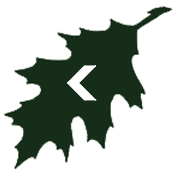New Guidance on the Management of Tree Risk Published by the NTSG
The National Tree Safety Group (NTSG), formed in 2007, is a broad partnership of organisations. It includes professional bodies, such as The Arboricultural Association, Institute of Chartered Foresters and the London Tree Officers Association, Tree owners and managers, and also organisations with heritage and/or conservation interests, such as The Ancient Tree Forum and the National Trust, and risk research consultants.
The National Tree Safety Group (NTSG), formed in 2007, is a broad partnership of organisations. It includes professional bodies, such as The Arboricultural Association, Institute of Chartered Foresters and the London Tree Officers Association, Tree owners and managers, and also organisations with heritage and/or conservation interests, such as The Ancient Tree Forum and the National Trust, and risk research consultants.
The aim of the NTSG was to develop a nationally recognised approach to tree safety management and to provide guidance that is proportionate to the actual risks from trees. This aim was realised in December 2011 with the publication of ‘Common sense risk management of trees’, which provides guidance on trees and public safety in the UK for owners, managers and advisors.
The document not only puts into context the relatively low risk posed by trees, details the legislation which applies to tree owners in terms of their duty of care, but – perhaps most importantly – also outlines what constitutes a reasonable and balanced approach to tree safety management. It indicates that in many cases this approach should incorporate the following three aspects:
• zoning: appreciating tree stock in relation to people and property
• tree inspection: assessing obvious tree defects
• managing risk at an acceptable level: identifying, prioritising and undertaking safety work according to level of risks
With regards to Tree Inspection, the publication states the following:
‘It is reasonable to inspect trees within falling distance of other well-used areas, such as car parks, gardens open to the public or urban public spaces. Zoning according to the levels of public use helps to decide in which areas trees pose higher risks than others and how to allocate tree inspection resources reasonably. Inspection will vary according to the site’s circumstances and the owner’s policy, influenced by levels of use and the importance of their trees. Even in well-used areas, inspecting and recording each tree is not always necessary. Trees with structural faults, but valued for their habitat or amenity interests, that are retained in frequently used areas may require specific assessment and management. On the other hand, trees in well-used natural woodland or woodland surrounding housing or a public park may only warrant an informal or non-onerous prioritised system of assessment to identify trees warranting closer inspection.’
The document will certainly be of great benefit to tree owners and managers not only in highlighting their legal obligations, but also abating their fears over whether they are meeting those obligations. As a consequence, the unnecessary removal and needless pruning of trees driven by trepidation about potential litigation should be reduced. This can only be a positive step towards helping to protect those trees that have particularly high ecological value such as ancient and other veteran trees. These are often the first to be condemned due to the presence of dead branches and/or decay, all of which may provide niche habitats for very rare flora and fauna.


